Last Updated on October 13, 2025 by Team Ideas24
Here’s one DIY idea inspired by repurposed ladders used for hanging towels. All you need is an old ladder and some hooks.
If you’re lucky enough to have a bamboo ladder, congratulations! You’ve got yourself a sturdy, eco-friendly, and stylish piece of equipment.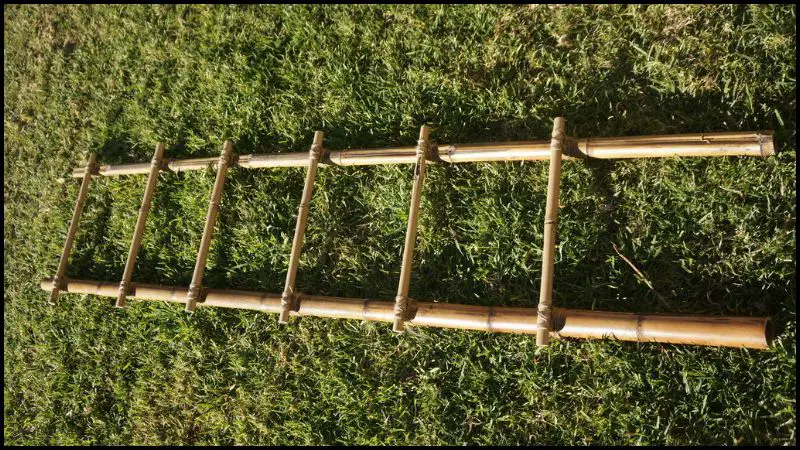
You can either paint it or leave it as is – it’s up to you! If you don’t have an old one to repurpose and want a rustic look, then gather some bamboo and start making your own ladder!
Contents
Uses of a Bamboo Clothes Tower
This is a great little storage or rack idea in the bedroom for scarves and ties. It’s easy to make, sturdy, lightweight, easily moved, space-saving, and beautiful – what’s not to love?
There are many different ways that people use bamboo cloth ladders. Here are some of the best ways to make use of your bamboo ladders:
1. Hang your towels
You can use your bamboo clothes ladder to hang your towels, or you can use it to store extra blankets. It’s a versatile piece of furniture that can be used in a variety of ways.
2. Hang necklaces in souvenir shops
You can reuse this to hang necklaces in souvenir shops. This is a great way to save money and space. Plus, it looks great!
3. Hang your scarf
You can also use this to hang scarves! This is a great way to add a bit of extra storage space to your closet, and it looks great too. Plus, it’s a great way to keep your scarves organized and tidy.
4. Hang your neckties, bags, belts, and other personal stuff
A bamboo clothes ladder is a great way to organize your neckties, bags, belts, and other personal items. It’s easy to assemble and you can use it in any room of your house. Plus, it’s a great way to display your favorite items.
5. Convert to the Drying rack
Bamboo clothes ladders are a great way to air-dry your clothes without taking up a lot of space. You can also use them to hang clothes that you want to keep wrinkle-free. They’re also great for storing out-of-season clothes or other items that you don’t need easy access to.
6. Hang your beautiful vine plants
You can recycle your bamboo clothes ladder to hang your beautiful vine plants. This is a great way to upcycle your ladder and add some greenery to your home. Be sure to secure this firmly before adding your plants. You can use recycled materials like old clothes or sheets to create a lovely natural display in your home.
Click on any image to start the lightbox display. Use your Esc key to close the lightbox.![]()

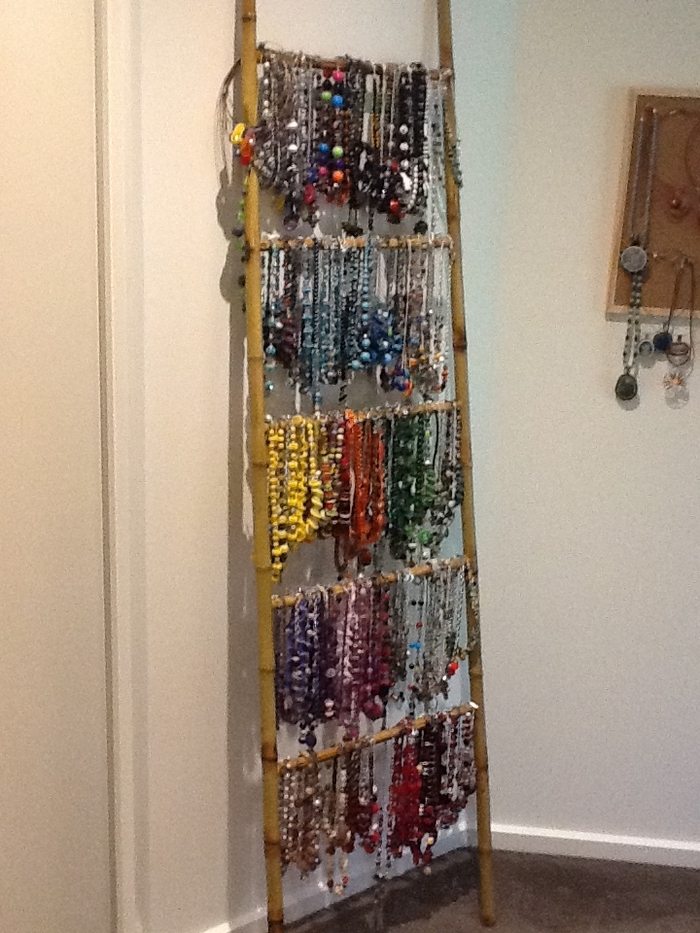
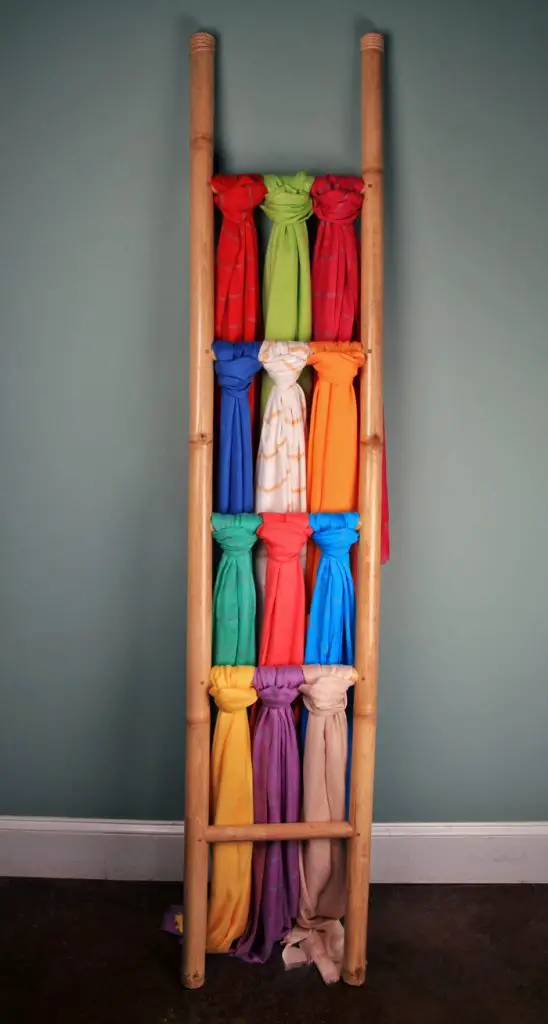
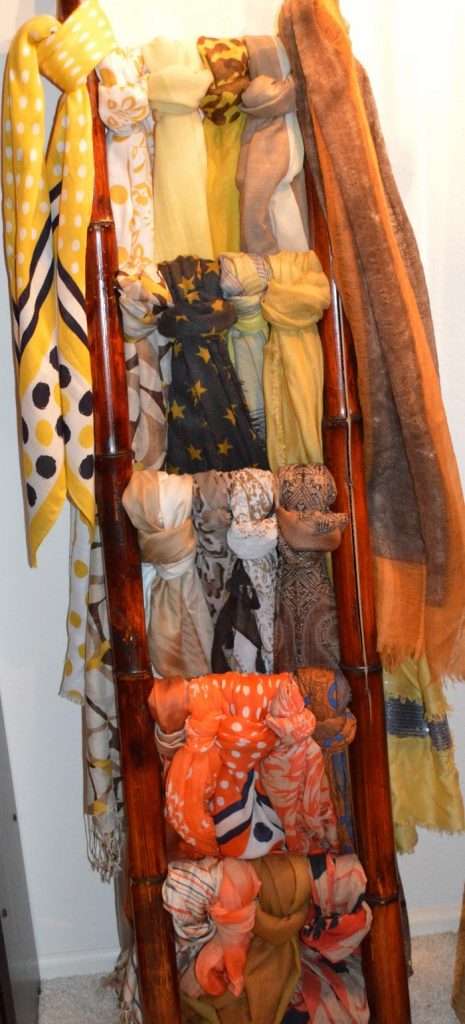
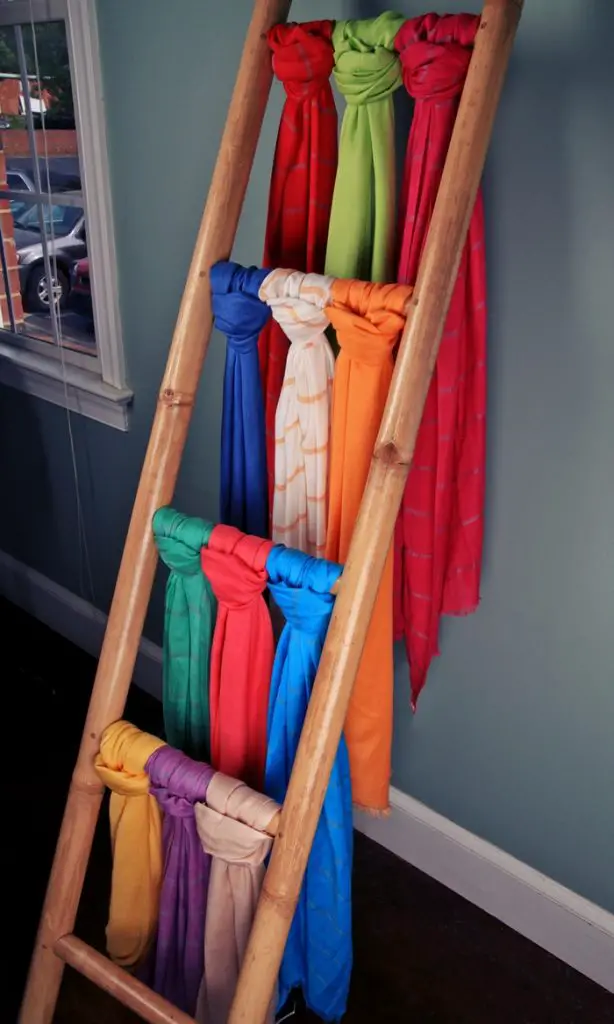
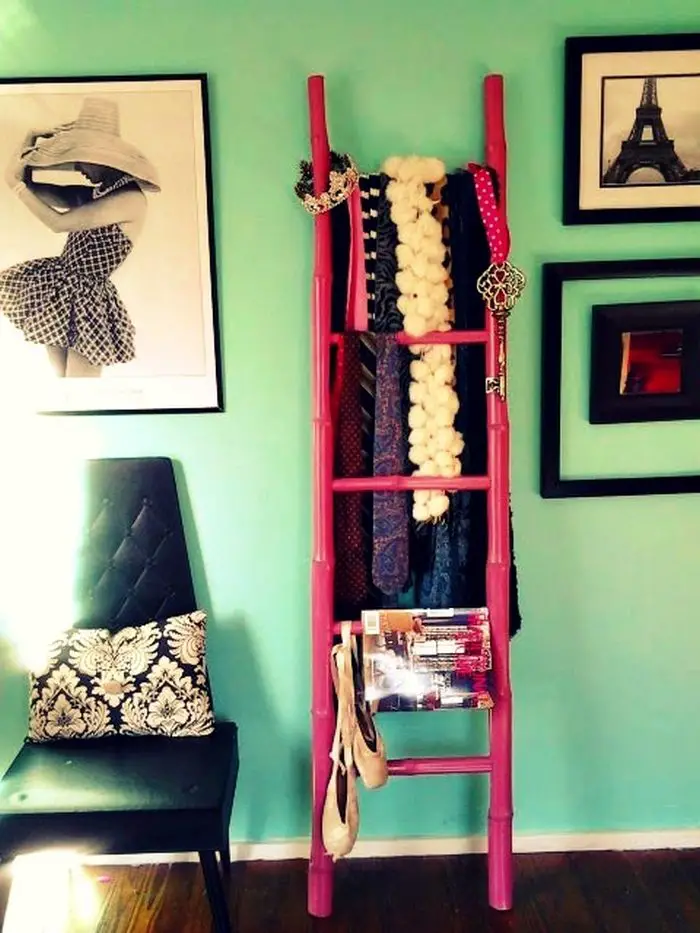
Making a Bamboo Ladder DIY Project
To make this DIY project you’ll need a few supplies:
- 2 long Bamboo poles (about 38mm diameter, 180cm tall)
- 3 smaller Bamboo sticks (about 20mm diameter, 90cm tall)
- Twine – natural
- Sandpaper
- Scissors
- Saw
- Ruler
- Marker
Steps:
Making a bamboo ladder is a great way to add some extra storage space to your home. Plus, it’s a unique and stylish way to display your clothes. Here’s how to make your own bamboo clothes ladder:
1. Measure
Measure the smaller bamboo sticks and cut them in half so that you have 6 small sticks. Use the saw to cut off any ends which are not flat.
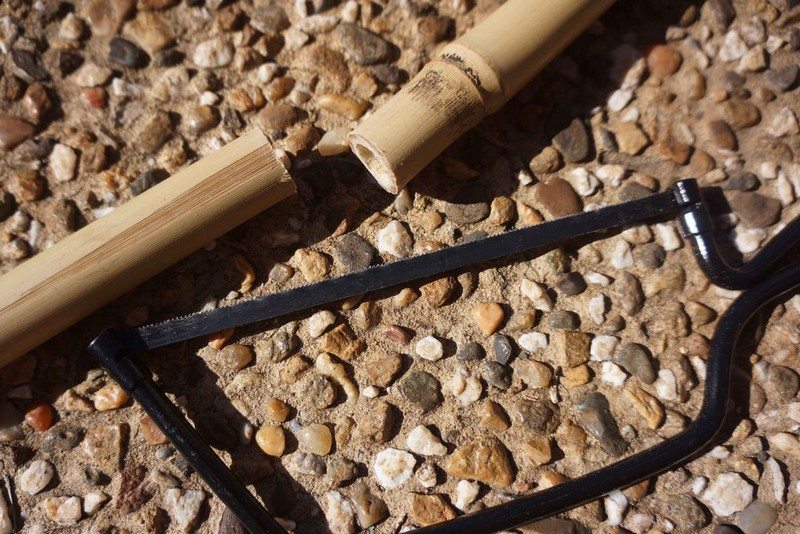
2. Sandpaper the edges
Use sandpaper to smoothen any rough edges.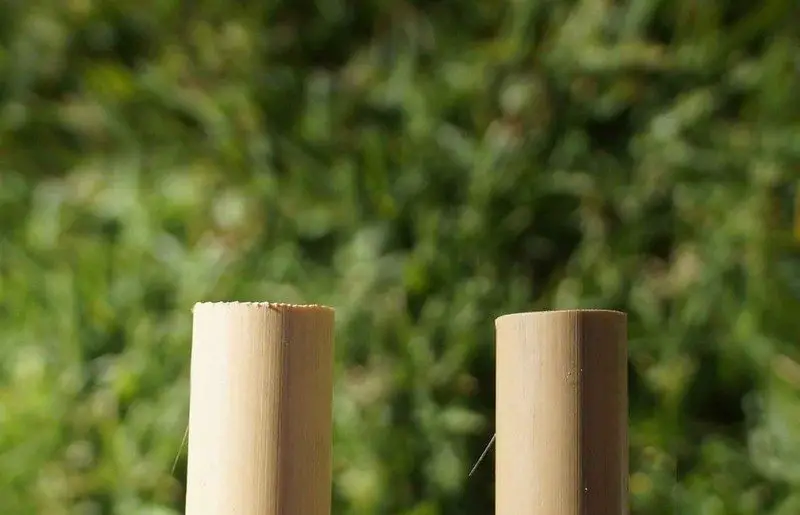
3. Connect the poles
Then measure out your poles so your cross poles are spaced evenly over your tall poles. I made mine approximately 30cm apart Try to be as accurate as possible.
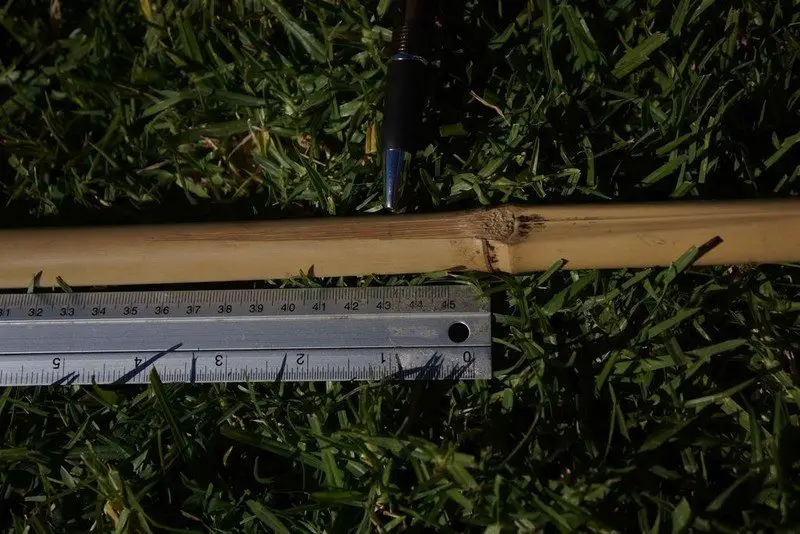
4. Make square lashings
Use the twine to make square lashings to fasten the cross poles with the uprights as tightly as possible.
I found this excellent page on how to tie the knot: Square Lashing
As you can see from the photo, I added a cross in the middle. This cross is not necessary for the ladder to be solid. I did it for decorative purposes only.
If you are following the page on how to tie a square lashing, between steps 12 and 13, I wound my twine diagonally across the top of the small pole, then straight under the upright a couple of times to get the effect.
Lash each cross pole onto the uprights, the same distance apart. Make sure your uprights are parallel.
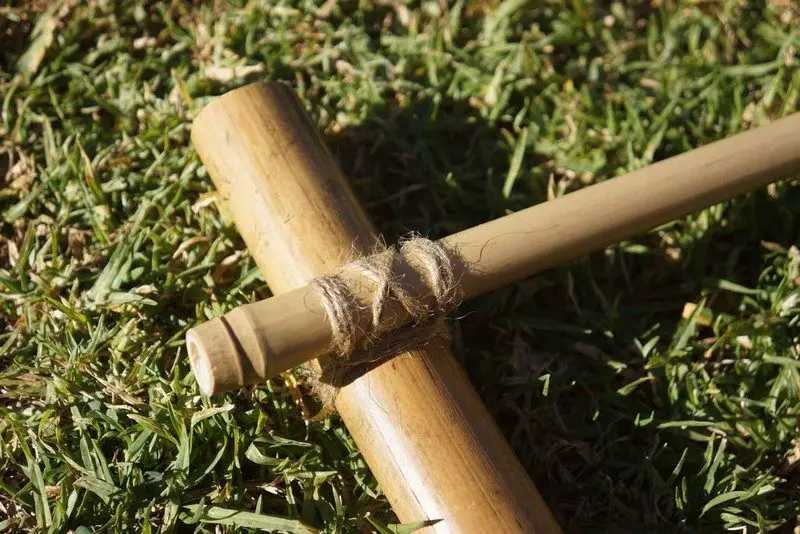
5. Move your cross poles to straighten up
Once your work is complete, you may need to move some of your cross poles if they are not quite in the right place. It is easier to move them horizontally than vertically.
Simply hold the upright tight, and maneuver the cross pole to where you want it. You may have to wiggle it a little. Once you’re done, you can lean it against a wall and hang things on it.
Unless you use extremely strong materials and your lashings are fantastic, please don’t attempt to actually use them as a ladder.

Thanks to MissMonkeyXXX for this great tutorial!
Choosing Bamboo Species and Diameter
Picking the right bamboo sets the tone for a safe, build. Match species, diameters, and wall thickness to load and room style. These choices keep your bamboo ladder DIY solid.
Moso vs. Tonkin: Strength and Straightness
Moso grows large, pale, and modern. It’s easy to source in 35–50 mm diameters with decent wall thickness. Tonkin runs straighter in smaller sizes and carries dense walls that shrug off dents. It also shows tighter internodes that make level rung placement simpler. Need taller uprights with a slim profile. Pair Tonkin stakes. Want a bold, chunky look in living spaces. Pick Moso and keep the nodes aligned.
Why 30–40 mm Uprights Resist Flex
Flex depends on diameter and wall thickness more than raw species strength. Uprights in the 30–40 mm range raise the section modulus, so bending drops under the same load. They stay round under tight wraps, which keeps lashings from biting and loosening. Thinner uprights feel springy and can oval at holes or notches. Choose consistent diameters side to side. Your bamboo ladder DIY will feel solid without turning heavy or bulky.
Sighting and Wall Thickness Checks
Hold each culm to your eye and rotate slowly. Reject doglegs and midspan kinks. Tap near nodes. A crisp ring suggests dryness. A dull thud hints at moisture or decay. Measure wall thickness at a clean end. Aim for uniform walls, not just big diameters. Thin walls crush under wraps and creep over time. Balanced walls help lashings stay tight and keep the bamboo ladder DIY straight.
Curing and Prepping Culms
Proper curing stops splits and bugs before they start. Prep makes lashings hold and finishes look clean. Use controlled heat, patient sun, and a simple borax bath for dependable results.
Heat-Treating to Relieve Moisture Stress
Apply gentle, even heat with a heat gun or over steam to drive off surface moisture and set sugars. Keep the tool moving to avoid scorch marks. Listen for a change in tone when you tap. The culm stiffens as moisture leaves. Let pieces rest on stickers overnight before lashing. Light heat also seals hairline checks. That reduces later splitting in dry rooms and keeps finishes uniform.
Sun-Drying and Airflow Setup
Set culms on stickers in a shaded, breezy spot. Direct sun heats quickly and can check the enamel. Rotate weekly so any bow balances. Raise ends off concrete to avoid wicking. Cover during rain with a tarp that allows side airflow. Drying is done when weight stabilizes and tap tones ring bright. Patient drying helps lashings stay tight and prevents shrinkage lines in oil or varnish finishes.
Borax Solution To Reduce Pests and Stains
Mix borax and boric acid in warm water for a simple preservative dip. Submerge small culms or brush liberally on larger pieces. Let them drain and dry completely before sanding. The salts deter powderpost beetles and mold while staying clear under most finishes. Wipe off residue so lashings grip cleanly. This low-cost step keeps a bamboo ladder DIY looking fresh in bathrooms, laundry rooms, and covered patios.
Lashing Options Beyond Square Lashings
Knots shape strength and style as much as the bamboo. Choose the pattern and cordage for humidity, load, and look. Better lashings keep your bamboo ladder DIY quiet and stable.
Square, Diagonal, and Shear: When to Use Each
Square lashings lock rungs to uprights for most joints. They shine when members meet at right angles and loads are moderate. Diagonal lashings stop racking when a frame wants to skew. Add them near the top and bottom rungs. Shear lashings bind two uprights for an A-frame that folds. Use a webbing or leather stay to control spread. Each pattern tunes stiffness and stability.
Twine, Sisal, Manila, Paracord: Cordage Choices
Twine hides under oil and gives a warm, organic look. Sisal bites glossy enamel and holds position. Manila pulls tight, ages beautifully, and shrugs off humidity in covered spaces. Paracord cleans easily and offers high strength for damp rooms. Pre-stretch synthetic lines before final cinch. Match cord diameter to rung size so wraps sit flush. Your bamboo ladder DIY stays tight and tidy.
Tensioning and Finish Tips
Pre-wrap joints snug, then twist a small dowel like a windlass to gain leverage. Remove the dowel and add frapping turns to lock tension. Hide tails under a finishing band for a clean look. Seal natural cord with wax or oil to resist moisture. Avoid hard varnish on lashings. It cracks. Keep finishes on the culm. That lets joints move slightly without squeaks.
Conclusion
A bamboo ladder DIY can be sturdy, safe, and good-looking when you pick the right species and diameter. Cure and prep the culms so lashings stay tight and finishes wear evenly. Use the right knot and cordage for the room and load. Anchor the ladder, add non-slip feet, and re-oil seasonally to keep it reliable. Document your bamboo ladder diy build with photos and measurements so you can repeat the design or scale it for towels, plants, or retail displays.




